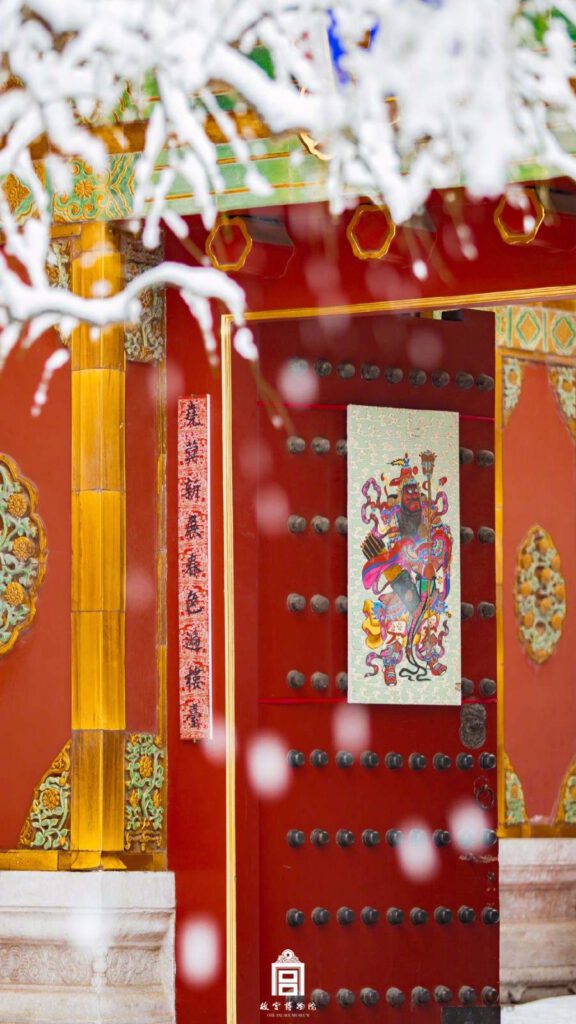
The Forbidden City is a magnificent collection of buildings encircled in a rectangular area located in the very center of Beijing, the capital of China. Nowadays it is perfectly preserved and allows us to see its architecture with precision. Every year with the arrival of the winter, many photographers come to capture its breathtaking beauty.

Rectangular in shape, the Imperial Palace is 960 meters long from north to south, and 750 meters wide from east to west, with an area of 720,000 m², making it one of the largest palaces in the world. It is one of the oldest in China, and also one of the most visited. Whether in terms of layout, three-dimensional appearance or overall appearance, this resort is truly an unrivaled masterpiece. A central axis crosses the entire palace, turning out to be the one crossing the city of Beijing at its center. The Forbidden City is divided into two parts, North and South. The southern part, the outer courtyard, served as a working area for the emperor and the north, the inner courtyard, as a place of residence. The main structures are arranged along the central axis, and the buildings on both sides of the axis are symmetrical.

The Forbidden City has four gates: The South Gate, The North Gate, The East Gate and The West Gate. At the four corners of the wall stand four towers, each with a three-layered eave and 72 ridges, which makes it a marvel of the framework. They are masterpieces of ancient architectural art.
The South Gate is one of the 4 entrances to the Forbidden City. Nowadays, this is the only possible entrance, the others being used only occasionally or for practical reasons, not for the visit of the site. It is by far the most important of the four. Oriented to the south, it overlooks Tian’anmen Square where the ticket offices are located. This door is on the north-south axis of the palace, right in the axis of symmetry. Remember that the palace is as symmetrical as possible because it is a sign of balance, which was supposed to refer to the Chinese people.
The North Gate is the gate at the northern end of the Imperial Palace, also known as the Military Engineering Gate. It was initially called the Gate of Occult Power until its restoration in the 17th century. Its tower once contained a drum and a bell which was used to announce the time. So it rang 108 blows at nightfall, then started again at sunrise. At night, it rang once an hour.
At the back of the South Gate, there is a vast courtyard surrounded by thick walls. It measures 10,000 square meters but is only a third of the next yard. On the north side is the Gate of Supreme Harmony, flanked by the small Zhendu and Zhaode gates, and on the west and east sides, there are two other gates that lead to the sides of this courtyard, respectively the Xihe and Xiehe gates. The river serves as a decoration as well as a water tank in case of fire. Its role was also intended to serve as the last symbolic rampart and to protect the pavilion of Supreme Harmony.
The gate of Supreme Harmony separates the first courtyard, known as the river of golden waters and that of the courtyard of the Palace of Supreme Harmony, the main palace of the Forbidden City. It is a very important door. This gate is guarded by two bronze lions. These are symbols of imperial power. The lion on the east side is a male. Its right front paw is placed on a globe indicating Imperial power extended throughout the world. The lioness on the west side has her left front paw on a lion cub. She represents the flourishing and prosperous imperial family. The rooms on either side would have served as warehouses to store items such as fur, porcelain, silver, tea, silk, satin, and clothing.

The whole complex is closely guarded by two lines of defense. The first consists of the moat, which measures 52 meters wide and 6 meters deep, it protects the city wall. The other is this wall, 3400 meters long, 10 meters high and 8.62 meters wide at the base. There are 9999.5 rooms with a total built area of 150,000 m². Because the emperor is the son of Heaven, he is believed to have fewer coins for his city compared to what God has in Heaven for his residence.
Some rooms are transformed into exhibition halls of the Palace Museum: Historical arts, jewelry room, room of watches and clocks, gallery of paintings, temple of pottery, gallery of toys, etc. The museum has a collection of 1,052,653 pieces of ancient art treasures, which is one-sixth of China’s total cultural relics. It is the museum with the richest collections in China, and also a world-famous museum concerning cultural art. The Forbidden City is a must-visit destination in China.
(Source: The Palace Museum / Centre de Chine à Paris)



